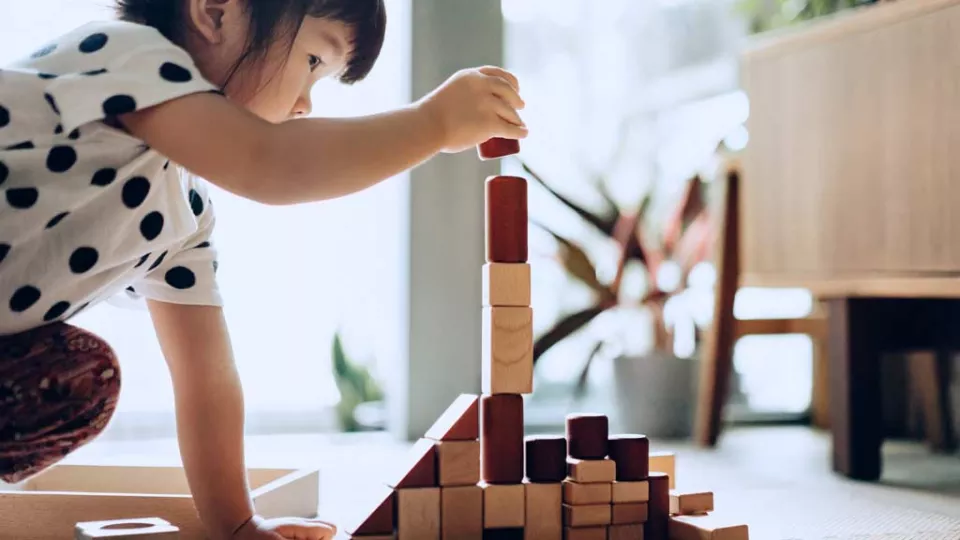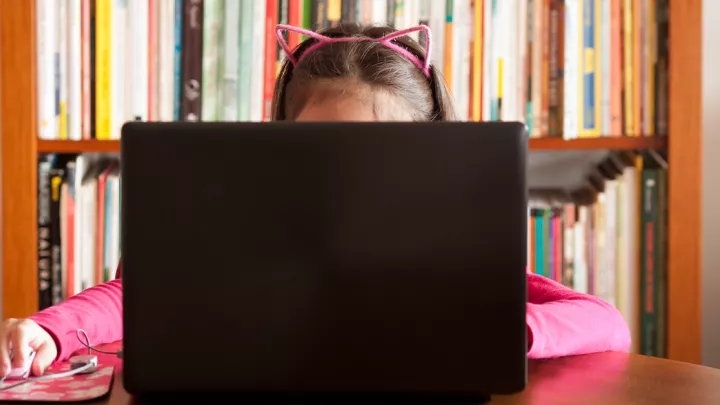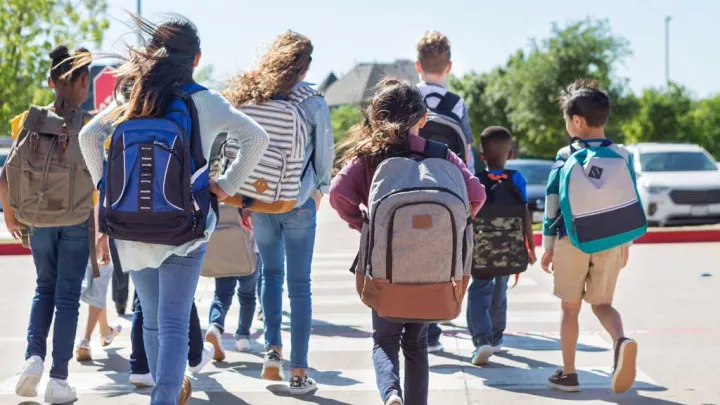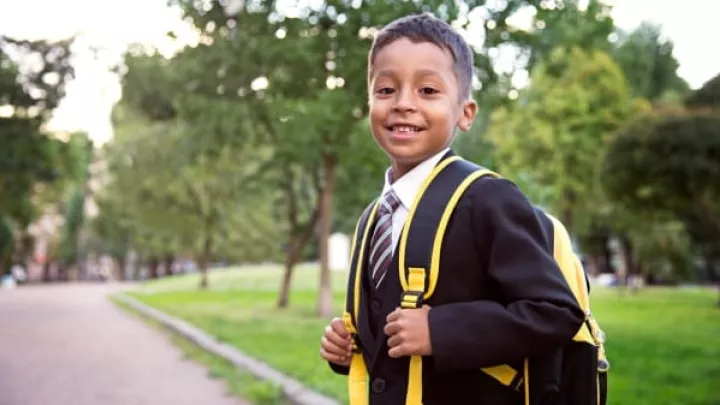
Parenting in the Time of COVID-19: Tips on Promoting Kids’ Development at Home
The longer the coronavirus pandemic keeps kids at home, the more parents, already subbing in as teachers, barbers, summer-camp counselors and IT technicians, are having to take on the role of child development monitor to make sure children reach their milestones and get appropriate stimulation even without the usual stimuli—friends, grandparents, sports leagues, after-school programs, etc.
According to Children’s Hospital Los Angeles Pediatrician Gladys Felix, MD, that means structuring kids’ days to balance learning and playing in a way that furthers development.
We asked Dr. Felix to suggest activities for toddlers and school-age children that target all four development groups: cognitive, motor skills, communication and social/emotional. But before undertaking all that—often while working to maintain their own job performance from home—the first thing Dr. Felix asks parents to do is cut themselves a break.
“With everything they have to juggle, they feel a bit overwhelmed during this time,” she says. “I tell families just do the best they can. School will continue, and we will figure out a way to get kids to learn. I’m talking about giving some structure, but it can be a simple structure. Just requesting your child read every day and then maybe thinking up some activities around that reading is very impactful. So the things parents can do for children to promote development at home can be simple.”
Small Children (ages 0-5)
Start with a milestone tracker: For the youngest of kids, developmental thresholds are numerous and wide-ranging—from the earliest milestones of cooing and turning the head toward sound, on to using a knife and fork and being more tolerant of rules. It’s too much for parents to pin to the refrigerator or mark off on a doorway, so Dr. Felix recommends using a tracking tool.
“There’s one I like a lot that was developed by the Centers for Disease Control,” she says. “It’s called Milestone Tracker. It’s an app, in English and Spanish. You can input your child’s age and it will give you the milestones as your child is growing so you can monitor their development.”
Playing pretend: The one area of development that the pandemic has most interfered with in small children is social/emotional, with day cares and preschools shut down, play dates canceled, and less time spent with extended family.
“Children learn a lot from people,” Dr. Felix says. “They imitate and repeat what they see, and that’s how they learn. If you reduce the amount of people and interaction, they’re going to have less opportunity to imitate adults and other children.”
So without those opportunities, she says, pretend play becomes an alternative indicator of good social/emotional development: “Does your child pick up a banana and pretend that it’s a phone? Do they have a doll and pretend to feed it?”
Dr. Felix advises encouraging this behavior. “Pretend play is really important to foster in toddlers. You have to play with them, with their dolls, their toys and their stuffed animals. Even having a child look in the mirror at their own image is important for social and emotional development.”
Stacks of fun: A lack of social interaction can also get in the way of cognitive development, since there’s less to engage a child’s brain. A good workaround for that, Dr. Felix suggests, is using educational toys with pieces that kids must pick up and move and sort in some logical way. It gets kids to think, and also can draw on motor skills.
“Any physical toy is going to be helpful for fine motor development of the hands,” Dr. Felix says. “Puzzles are great, shape sorters, simple blocks or anything that you have at home that you can stack. Empty Amazon boxes, Tupperware containers—for stacking, for creating towers, for knocking over and having fun—are all really good for development.”
Read, read, repeat: Reading is a favorite recommendation of Dr. Felix’s because it hits multiple areas of development, particularly those within communication and cognition. “Reading is so, so, so important for all of these milestones,” she says.
“For younger kids, I know teachers like to ask the five W’s—the who, what, where, when, why—to make sure kids have good reading comprehension,” she says. “You can generate activities from that reading. Drawing stories from what they read. Writing their own books. I think all that is very important.”
Keep up your well-child visits: Still, the best thing parents can do to monitor their kids’ development is to keep up with their well-child appointments. Your Pediatrician may offer telehealth visits for parents who prefer not to venture out.
“Development is one of those things we can do through telehealth if a family does not feel comfortable coming into our clinic,” Dr. Felix says. “We do all the elements of the well-child visit that we can over the phone or over video.”
Dr. Felix says she can gather information through conversation, but the addition of a video component will enhance the screening. “We can observe the child and observe the parent playing with the child and get information about their development.”
School-Age Kids (6-12)
Replicate the school environment: “From first grade on,” Dr. Felix says, “we track development, but there aren’t specific milestones that we follow any longer. Now we’re talking about school achievement, socialization with peers. A lot of that is hard to gauge when kids are not in school.”
What’s harder is serving as your child’s teacher, P.E. coach and recess proctor—not to mention lunch maker. Dr. Felix says it’s imperative that parents create the structure of a school day, establish a dedicated learning space, and portion out the day so that it has the format and appearance of school.
“That’s what school does for kids, it gives them structure. They have specific learning times, specific play times, specific eating times. If you can create some of that structure at home, that helps school-age children navigate their day, and do so a bit more independently from their parents.
“Creating a learning environment, keeping in touch with the teacher to know exactly what the child should be doing to learn the concepts, I think is all that parents really need to do.”
Ideas for exercise: Even indoors, school-age kids can generally find ways to maintain their motor development, often with some repurposing of the family possessions, says every parent who ever told her kids to stop using the sofa as a trampoline, the cushions as a Frisbee, and the housecat as a medicine ball.
Dr. Felix suggests a more constructive way to use home furnishings to get kids their 60 minutes of daily exertion—“fun, heavy play where they’re sweating and running around,” she emphasizes.
For the 6-9-year-old set, she says, “creating little obstacle courses in your home, in your yard, in your local park if you can socially distance—with stuff that you can find at home for them to walk across, to jump off of, to climb under—is really fun for kids to practice their coordination, to practice balancing.”
The better-coordinated 9-12 group can handle more, so they will require more. “For the older school-age kids, promoting a game of basketball or any game where there is some equipment, like paddles and balls, is more fun.”
But how do you play a multiperson sport while isolating? Guess who has to suit up.
“If they don’t have any other kids around, I think it’s important for parents to try to get in there and play some of these sports with their kids,” Dr. Felix says. “Physical activity, especially now, is what will help families keep sane.”
Sanctioned screen time: The one thing parents can’t provide is the peer-to-peer contact that takes on more importance as children grow. Dr. Felix says to enlist the tool that is typically scorned enemy No. 1 in the fight to maintain your kid’s concentration and mental energy: screen time!
“Whether it be video calls or just phone calls, or other popular modalities of socialization like group video games that are age-appropriate, I think these are all healthy ways to communicate with friends,” she says.
So you’re prescribing screen time?
She is indeed, but with limits and an essential distinction. “In general, we want to limit screen time to no more than two hours for this age group, but that’s noninteractive screen time. When there is person-to-person interaction for learning, for homework, we don’t classify it as screen time. A video call with friends wouldn’t count in that two-hour allotment for the day.”
Dr. Felix says technology put in the service of gathering friends around their hobbies and interests can allow for socializing that also engages cognitive and communication skills.
“You could have a book club for kids,” she says, brainstorming. “That would help promote learning, too.”


